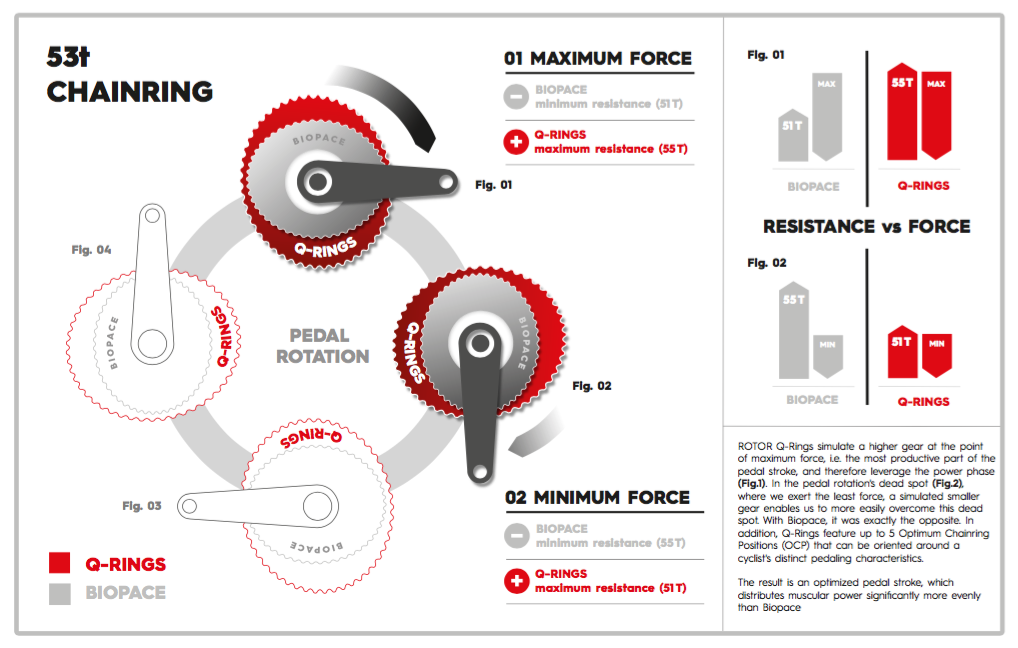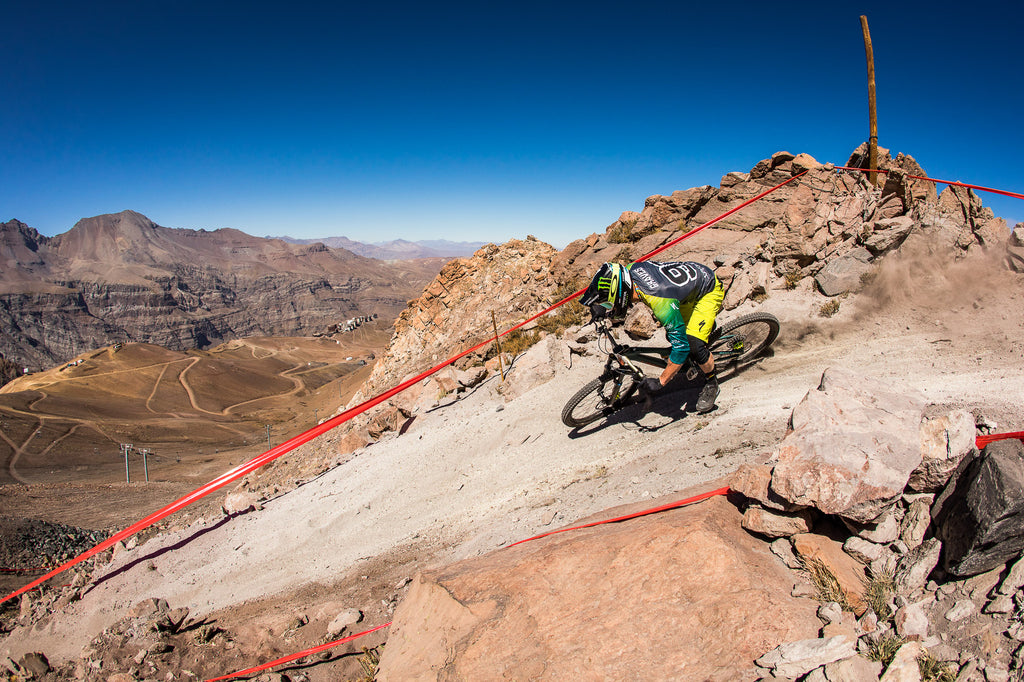Oval Chainrings: Why Try Q?
The old saying goes "if it ain't broke, don't fix it," and while those words may hold some water, here at the ROTOR office we think they fall a little short. Sure, we might not need to patch together things that are still in good shape, and certainly don't suggest covering flawless components with bandaids, but we think there's always room for improvement and innovation, and innovation lies at the core of our signature Q Ring oval chainrings.
As bike technology soars into the future at mach-speeds, we believe that improvements should go well beyond carbon-fiber frame layups and crispy-shifting drivetrains, and so we dive into the world of ovality, harnessing your strength, and eliminating weakness, and exploring what lies beyond the circle.

Let's dive into the benefits of an oval chainring:
|
To achieve performance benefits, we'll need to dive into the biomechanics of a pedal stroke and the science behind oval chainrings.
While we'd all love to lay claim to the smoothest pedal stroke on the road or trail, in actuality every one of us host an array strengths and weaknesses during the pedal rotation. Q rings aim to decrease weak points, while getting the most from our power phase by placing the chainring at an angle that sets you up with fewer teeth to travel where you have a little less power, and more to push where you're at your strongest. The result is a smoother pedal stroke over all, that pulls double-duty to reduce strain on the knees and hips by reducing the pressure needed to get through the dead-spot in the rotation.

As much as we encourage cyclists to ride with ROTOR cranksets, most of us can't afford to swap cranksets and make major component upgrades regularly, which is why we craft our Q Rings with a variety of BCD options to cater to those who ride Shimano, Campy, or just about any other standard crankset. Our chainrings are easy to mount up with your current chainring bolts, and we even offer chainring bolt covers to make the transition from your Shimano crank to ROTOR chainring look as clean and seamless as possible.
Staying in line with our performance benefit goals, we offer many of our chainrings with OCP options (optimum chainring placement). Our OCP Technology goes on the assumption that not all of us have the same anatomy, and while many of us may find our power phase in the same position on the chainring, some of us hit that power a little further forward or back on the crankset. To remedy this, most of our chainrings come with at least 3 different options when it comes to chainring positioning, allowing you to fine tune your Q Rings to the perfect spot for you.

This all sounds a lot like Biopace...
We catch your drift, and understand where you see the similarities... they are both oval rings, after all... But not all ovals are created equally, and there's a pretty significant difference between Shimano's Biopace that we saw in the 80's and 90's, and today's ROTOR oval rings.
ROTOR oval rings differ from Biopace in that they simulate a higher gear at the point of maximum power, where you've got the most force in your pedal stroke, giving you more leverage through the power phase of your rotation (see figure 1). This is achieved by placing the most teeth at the peak of your power.
When you reach the dead spot in your pedal stroke (figure 2), you exert a little less force. ROTOR oval rings accommodate this by simulating a smaller gear through your weaker moments by positioning fewer teeth on the chainring when you're pushing through the dead spot, making it easier to power through. This works in exactly the opposite way from Biopace.

Oval Ring Adaptation
Oval chainrings make use of your leg muscles a bit differently than round chainrings do. By doing so, the intermuscular coordination of your movements changes and it takes some time to adapt. The following guidelines describe the adaptation process from round to oval.
Each phase can vary from a day to a week. Complete adaptation to the new chainrings can take up to 10 hours. Nevertheless, it only takes one pedal stroke for you to feel the oval chainrings’ benefits from the very first minute. You will note it significantly when climbing, as well as in an aerodynamic position when training for time trial or triathlon.
Additionally, oval chainrings can be good for your knees. Riding with oval chainrings affects different biomechanical processes and strengthens the inner leg muscles, which, in turn, lessens strain on the knee. Riding with oval chainrings can therefore particularly help cyclists with knee problems to enjoy more frequent and longer rides.
There has long been debate about whether or not oval chainrings can make you fast. While there may not be immediate improvement when riding an oval for the first time, a smoother and more efficient pedal stroke will always have positive improvements on your ride.
Now, are oval chainrings only for pros? No – above all they are for every cyclist for whom the idea to optimize his/her pedal stroke hasn’t yet occurred and who would like to save power via a round pedal stroke. Those persons benefit most from ROTOR oval rings. Exercises such as pedaling with one leg only, or pedaling at a very high cadence are helpful to ride more efficiently. Oval chainrings, by nature, minimize the dead spots and therefore help the rider save power. The adaptation process is specific to the individual, varies in length and doesn’t need any preparation.
Adaptation isn’t limited to habituation, but also includes training muscles that were used minimally before. This leads to a better overall balance of muscle groups involved when riding. Once you passed through this process you will notice – oval becomes normal.
Adjusting ROTOR Oval Rings to your OCP
If you haven’t yet determined your OCP, take a peek at the small booklet that comes with every ROTOR Oval ring— it contains simple instructions about how to find your correct OCP.
In more than 90% of the cases, you will be fine with the standard, recommended position (e.g. 3 on a road bike).
This is another reason why we recommend going through part 1 first, ride for at least 10 hours before changing the OCP. With respect to road cycling, “standard” means position 3 out of a 5 possible positions – which means you still have 4 other options to try out.
With respect to off-road riding, standard means position 2 out of a possible 3, so you have two other options to work with.
If you want to dig a little deeper into the science behind oval chainrings (with a specific emphasis on ROTOR’s Q rings), download our White Paper “The Science Behind Non-circular Chainrings” here.



